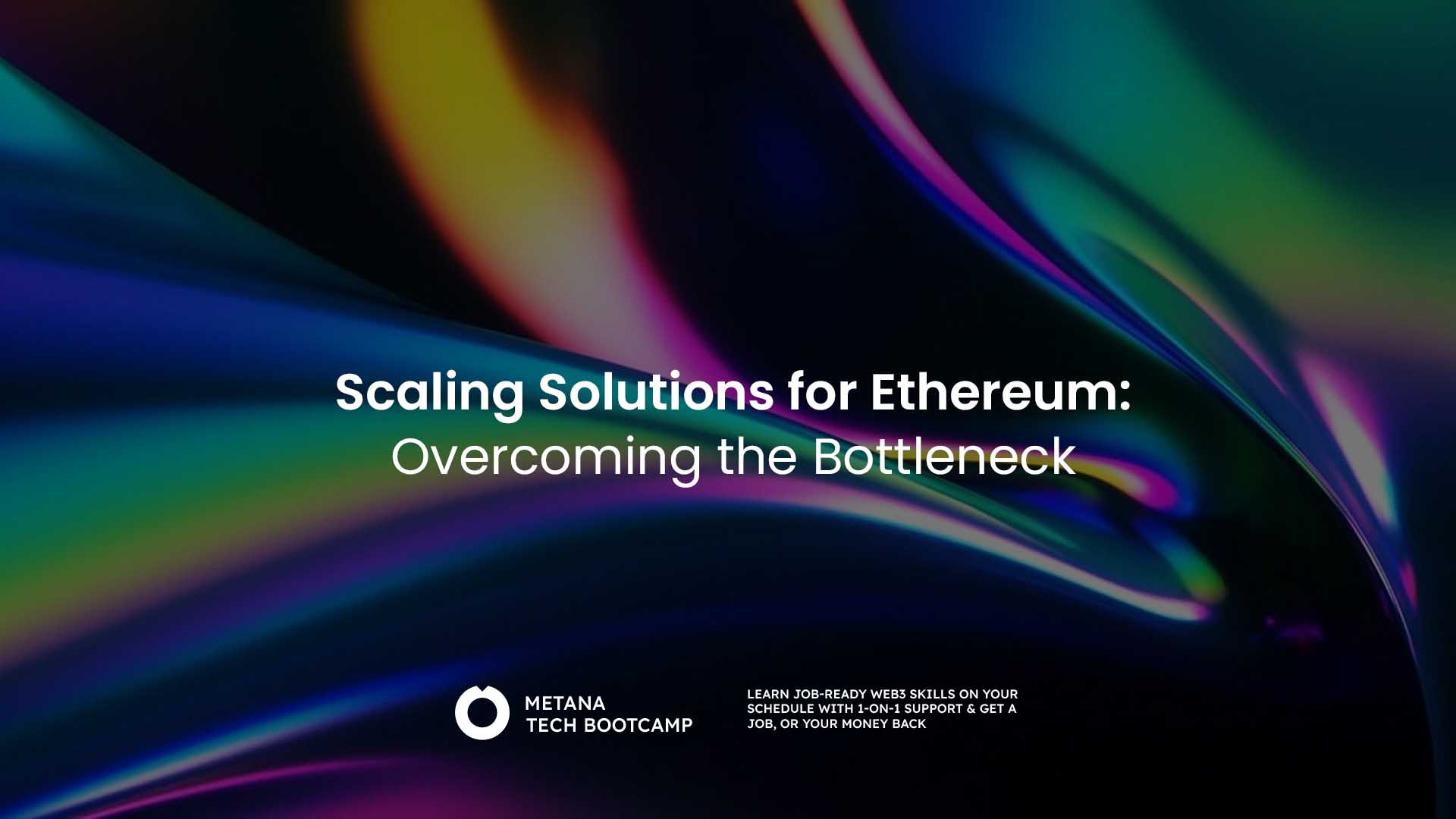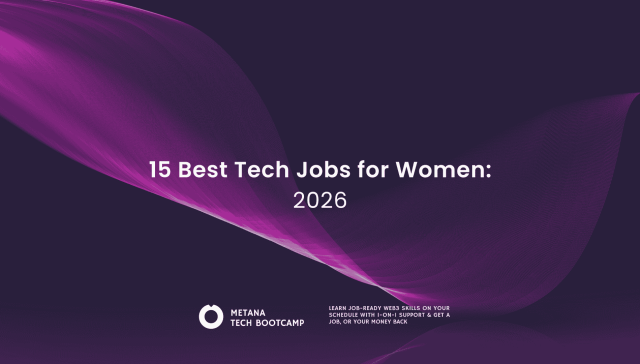TL;DR:
- Ethereum’s current throughput is limited to 15 transactions per second, leading to network congestion and high gas fees.
- Layer-1 solutions like Ethereum 2.0 aim to enhance scalability by transitioning to a Proof of Stake consensus mechanism and implementing sharding.
- Layer-2 solutions, such as rollups and state channels, offload transactions from the main chain to reduce congestion and improve speed.
- Scalability is crucial for Ethereum’s mass adoption, impacting the efficiency of decentralized applications (DApps) and user experience.
- Implementing effective scaling solutions is essential for Ethereum to maintain its leadership in the blockchain space and support future innovations.
Ethereum, one of the most popular blockchain platforms, has faced a significant scalability challenge. The network’s current throughput is limited to 15 transactions per second (TPS). This limitation affects decentralized applications (DApps) adoption and worsens the user experience. As more users and developers join the Ethereum ecosystem, the network becomes congested, leading to higher gas fees and slower transaction times.
This scalability issue hinders Ethereum’s potential to be the go-to platform for decentralized finance (DeFi), non-fungible tokens (NFTs), and other blockchain-based innovations. Implementing a robust scaling solution is crucial for a scalable Ethereum network, which is essential for maintaining its position as a leader in the blockchain space and enabling mass adoption.

What is Scalability?
Scalability refers to a system’s ability to handle increasing workloads and user demands without compromising performance or efficiency. In the context of Ethereum, scalability means the network’s capacity to process a high volume of transactions rapidly and reliably.
Why is a Scalable Ethereum Network Crucial?
A scalable Ethereum network is vital for its long-term success and widespread adoption. Scalability addresses network congestion challenges, high fees, and limited user experience, ensuring Ethereum remains a competitive and efficient platform. Here’s why scalability is crucial:
- Network Efficiency: A scalable Ethereum network can handle the growing number of DApps, users, and transactions without congestion, reducing fees and enhancing user experience.
- Mass Adoption: Scalability is essential for Ethereum to accommodate millions of users globally without compromising performance.
- Cost-Efficiency: A scalable network lowers gas fees, making Ethereum more accessible to a broader audience.
Innovation: Scalability fosters innovation by enabling the development of more complex and resource-intensive applications within the blockchain ecosystem.
Scaling Solutions
To overcome the scalability hurdle, researchers and developers have explored various approaches.
Layer-1 Solutions
Layer 1 solutions involve changes to Ethereum’s base protocol to increase scalability. These solutions were fundamental upgrades that address the core limitations of the network.
Ethereum 2.0
Ethereum 2.0, also known as Eth2 or Serenity, is a significant upgrade to the Ethereum network. It aims to improve scalability, security, and sustainability. The upgrade is being rolled out in phases, with the most significant change being the transition from Proof of Work (PoW) to Proof of Stake (PoS) consensus mechanism. PoS is more energy-efficient and allows for faster transaction processing.
Sharding (Distributing the Load)
Sharding is another key feature of Ethereum 2.0. It involves dividing the Ethereum network into smaller pieces called “shards.” Each shard processes its transactions and smart contracts, which increases the network’s overall capacity. Sharding is expected to significantly boost Ethereum’s TPS (Transactions Per Second) by allowing parallel processing of transactions across multiple shards.
Layer-2 Solutions: Accelerating Ethereum
Layer 2 solutions build on the existing Ethereum network to improve scalability. These solutions move transactions off the main Ethereum chain (Layer 1) to reduce congestion and lower fees. Layer 2 approaches are faster and more cost-effective than making changes directly to the Ethereum blockchain.
Plasma Chains (Child Chains for Specific Use Cases)
Plasma chains are a Layer 2 solution that creates child chains off the main Ethereum network. These child chains handle specific use cases, such as payments or gaming, and periodically submit their transactions to the Ethereum mainnet. Plasma chains can process thousands of transactions per second, making them ideal for high-throughput applications.
State Channels for Off-Chain Transactions
State channels allow users to conduct transactions off-chain while still being secured by the Ethereum network. Two parties open a state channel by locking up some ETH on the mainnet. They can then transact with each other off-chain, only settling the final state on the Ethereum blockchain. This approach reduces the Ethereum network load and allows instant transactions with low fees.
Rollups: Optimistic and ZK Variants
Rollups are another popular Layer 2 solution. They bundle multiple transactions into a batch and submit them to the Ethereum mainnet. There are two main types of rollups: Optimistic Rollups and Zero-Knowledge (ZK) Rollups. Optimistic Rollups assume that transactions are valid and only run computations if a fraud-proof is submitted. ZK Rollups, on the other hand, use cryptographic proofs to verify transactions. Both approaches significantly reduce gas fees and increase transaction throughput.
Sidechains: Parallel Blockchains for Scalability
Sidechains are independent blockchains that run parallel to the Ethereum mainnet. They are compatible with Ethereum and can communicate with it, allowing users to transfer assets between the two networks. Sidechains can be optimized for specific use cases, improving performance and scalability. However, they rely on their security model, which may differ from Ethereum’s.
Benefits and Limitations of Layer 2 Approaches
Layer 2 solutions offer several benefits, including reduced gas fees, faster transaction times, and improved scalability. Yet, they also come with drawbacks, including potential security vulnerabilities and dependence on the Layer 1 network for final settlement. Each type of Layer 2 solution comes with its own set of trade-offs. While plasma chains and state channels are well-suited for specific use cases, they may lack the versatility of rollups. Conversely, rollups offer a broad scaling solution with lower fees but may require more complex implementation. Similarly, sidechains offer scalability and customisation but may introduce security concerns.

Optimizing Ethereum’s Core Protocol
Consensus Mechanism Upgrades
Transitioning from PoW to PoS in Ethereum 2.0 is one of the most significant consensus mechanism upgrades. PoS reduces the energy consumption of the Ethereum network and allows for faster block validation, improving the overall scalability.
Improvements in Ethereum Virtual Machine (EVM)
The Ethereum Virtual Machine (EVM) executes smart contracts on the Ethereum network. Optimizing the EVM can lead to faster and more efficient contract execution, improving the network’s scalability. Several proposals are being considered to enhance the EVM’s performance, including reducing gas costs and optimizing code execution.
EIP-1559 and Its Impact on Gas Fees
Ethereum Improvement Proposal (EIP) 1559 was implemented in 2021 to change how gas fees are calculated on the Ethereum network. The proposal introduced a base fee that is burned, reducing the total supply of ETH and making gas fees more predictable. While EIP-1559 does not directly improve scalability, it helps manage network congestion by adjusting fees based on demand.
The Road Ahead: Ethereum’s Scaling Roadmap
The Role of the Developer Community in Scaling Efforts
The Ethereum developer community is the backbone of the network’s growth. Their innovation, collaboration, and problem-solving are essential for overcoming scalability challenges. Developers propose, build, and refine scaling solutions, ensuring Ethereum’s continued development.
Ethereum 2.0 and Its Phased Rollout
Ethereum 2.0 is a multi-phase upgrade designed to significantly enhance the network’s scalability, security, and sustainability. The initial phase, which introduced proof-of-stake (PoS) and the Beacon Chain, marked a major milestone. Subsequent phases will implement sharding, which divides the network into smaller segments, improving transaction processing capacity.
Layer 2 Solutions
Layer 2 solutions offer near-term scalability improvements by handling transaction processing outside the main Ethereum network. Techniques like rollups, state channels, and optimistic rollups optimize transaction efficiency, reducing fees and increasing speed. These solutions complement Ethereum 2.0 and provide a bridge to the network’s full potential.
Hybrid Solutions
Combining Layer 1 and Layer 2 approaches creates hybrid solutions that leverage the strengths of both. For instance, using rollups in conjunction with sharding can optimize transaction throughput and reduce costs. Hybrid models offer a flexible approach to scaling Ethereum, adapting to evolving network conditions.
- Validium:
This hybrid solution leverages the advantages of rollups while optimizing data availability. By storing transaction data off-chain, Validium significantly reduces the burden on the Ethereum mainnet, improving scalability without compromising security.
- Volition:
Offering flexibility in data availability, Volition empowers users to choose between on-chain and off-chain data storage based on their specific needs. This tailored approach strikes a balance between security and scalability.
Cross-Chain Solutions and Interoperability
Interoperability between Ethereum and other blockchains is crucial for expanding the ecosystem. Cross-chain solutions enable the transfer of assets and data across different networks, reducing congestion on Ethereum. This interconnectedness enhances scalability by distributing the workload and tapping into the resources of other chains.
Potential Synergies Between Different Scaling Solutions
To maximize Ethereum’s scalability, it’s essential to explore synergies among various scaling solutions. Combining Layer 2 techniques, Ethereum 2.0 features, and cross-chain interoperability can create a robust and efficient network. A holistic approach is key to achieving Ethereum’s long-term goals.
Conclusion
Ethereum’s scalability challenge is a significant hurdle to its mass adoption and continued success. However, with the development of Layer 1 and Layer 2 solutions, as well as ongoing optimizations to the core protocol, Ethereum is on the path to overcoming this bottleneck. The road ahead involves collaboration within the developer community, the phased rollout of Ethereum 2.0, and exploring hybrid and cross-chain solutions. As these efforts progress, Ethereum will become a more scalable and robust platform, paving the way for the next generation of blockchain applications.
FAQs
What is the main scalability issue facing Ethereum?
- Ethereum’s main scalability issue is its limited transaction throughput, currently around 15-30 transactions per second. This limitation leads to network congestion, higher gas fees, and slower transaction times.
What is Ethereum 2.0?
- Ethereum 2.0, or Eth2, is a major upgrade to the Ethereum network that aims to improve scalability, security, and sustainability. It includes transitioning to a Proof of Stake (PoS) consensus mechanism and introducing sharding.
What is the difference between Layer 1 and 2 scaling solutions?
- Layer 1 solutions modify the Ethereum protocol, while Layer 2 solutions operate on top of the mainnet, offloading some transaction processing to improve scalability.
Which scaling solution is the best?
- The optimal solution depends on specific requirements, such as transaction volume, security needs, and user experience. For example, ZK-Rollups offer higher security, while Optimistic Rollups provide faster confirmations.
How do rollups work?
- Rollups bundle multiple transactions into a batch and submit them to the Ethereum mainnet. They reduce gas fees and increase transaction throughput by processing transactions off-chain before finalizing them on the mainnet.
Are there any risks associated with scaling solutions?
- Some scaling solutions, such as Optimistic Rollups, carry inherent risks, such as the possibility of fraudulent transactions. However, these risks can be mitigated through careful design and implementation.
What is the role of the Ethereum developer community in scaling efforts?
- The Ethereum developer community is crucial in proposing, implementing, and optimizing scaling solutions. Collaboration within the community is essential for ensuring that Ethereum’s scaling roadmap is on track.








